An Overview of Literacy for Children with CVI
Children with cortical visual impairment (CVI) present a unique challenge to educators and families, and many wonder what the impact is on the development of literacy skills. The information presented here is designed to be an overview of some of the implications of the CVI Range for literacy, with specific strategies for children who visually function in each of the three phases of CVI. Also included are general guidelines for creating books for children with CVI, as well as specific guidelines for each of the phases. Special attention is paid to the identification of salient features.
- Understanding the Implications of the CVI Range for Literacy
- General Guidelines for Creating Books for Students with CVI
- Identifying Salient Features
- Guidelines for Modifying Books for Students in Phases I, II, and III
Understanding the Implications of the CVI Range for Literacy
I am often asked the following from parents and teachers of children with CVI, “What are the best books I can get for my child/student who has CVI?” I always respond with a question of my own, “What is your child’s level of visual functioning on the CVI Range?” Because children with CVI have very distinct needs depending on which Phase they are visually functioning in, it is of utmost importance to know the child’s visual functioning level on the CVI Range and how specific behavioral characteristics affect them. This must be known prior to purchasing a premade book or creating a book for the child to learn from. For example, a book with a variety of multicolored, abstract cartoon-like illustrations on each page wouldn’t be appropriate for a child who visually functions at the beginning of Phase I and is just starting to use vision. But with knowledge of assessment results and careful consideration of each child’s specific preferences and needs, a collection of books can be made which encourage looking behavior, interaction, interest and develop pre-literacy skills.
In addition to knowing the child’s level of visual functioning on the CVI Range, you want to have a good understanding of what the child is interested in looking at! To make reading fun, you need to incorporate what the child loves, into the books. Pre-literacy and literacy activities need to be enticing to a child, to the point that they look forward to and want to interact with books. The best way to start off is in knowing what the child’s preferred visual target is. Parents are often the most knowledgeable in this area. They know what objects and targets the child looks at most frequently and often, the real, concrete object (or part of it) can be used in a book. Having a clear understanding of the child’s preferred color and tying it into or along with the preferred object is also crucial, especially for the child who visually functions in Phase I.
My methods of creating books and the examples of books which I share are primarily designed for very young students with CVI, in the birth through 5-year-old range (although they could also be used with older students with CVI). Since every child with CVI has unique needs, the sample books I share are simply examples; each student requires appropriate materials which match their individual needs. My hope is that these suggestions (and my sample books) will spark your imagination, and help guide you in creating literacy that will work for your child or student.
Please refer to Adapting Books and Literacy for Students with CVI for ideas of sample books to make. Please refer to Materials Used for Adapting Books and Literacy for Students with CVI to see a listing of materials I used to make the sample books.
General Guidelines for Creating Books for Students with CVI
Follow these general guidelines when creating books for students with CVI:
- Always have a clear understanding of your child’s or student’s CVI Range score and the behavioral characteristics they demonstrate, which will guide you as to how best to create the book.
- Make reading time fun by using the child’s preferred, favorite targets that are interesting and enticing to them.
- In most cases, it is best to use a solid colored background for the pages which makes the target really “POP”. While students may not have ocular issues resulting in reduced contrast sensitivity, nevertheless they do benefit from having a solid colored background that makes the target stand out or “hides” complexity in the array. I have had the most success creating books with pages of black, heavy cardstock. See the Materials section for more information on this.
- When I make up stories about a student’s favorite visual target used in a book, I often “read” the story to the tune of other well-known jingles, such as, “Ten Little Monkeys Jumping on a Bed”, “These are a Few of My Favorite Things” or, “The Itsy-Bitsy Spider”.
- If the child has difficulty with competing sensory complexity, they may not be able to look at the book/targets and listen to the story being told at the same time. Look at the child’s assessment results to determine if reading the story (while the child is looking) is appropriate. It may helpful to wait until the child glances at or looks at the target and then you say, “I see that you are looking at ____” and include 2 or 3 salient features along with a bit of a story. For an example of this strategy, see the sample book, “Where is the Red Gift Bag?”. The important key here is waiting until after the child has looked (or is looking) at the target, then you can speak.
- If the child has difficulty with visual complexity (looking at more than one target in an array), you may not want print on each page. See Adapting Books and Literacy for Students with CVI for strategies to use regarding the use of print.
- Use “Page Fluffers” to separate pages. This makes it easier for little fingers to help with turning pages. A “Page Fluffer” can be created by sticking a clear, round, self-adhesive rubber pad bumper to the top, right corner of each page (or be creative and use an alternate “Fluffer” of your choice). See the Materials section for more information on this.

- Resist the temptation to laminate pages. Lamination causes glare and many students with CVI will not use their vision (or not consistently) if the target is producing glare.
- Use Blocking Techniques when there are too many targets on a page or if print is used and causing additional “visual clutter”. The easiest Blocking Technique to use would be to have a sheet of heavy, black tag board, cut into various sized rectangles. Use an appropriate sized piece of this black paper to block off print or other “visual clutter” from the child’s view.For an example of this strategy, see the sample book, "One Yellow Slinky Bouncing Up and Down".
- Use SpotLIGHTing Techniques to draw visual attention to specific targets in a book (see the book, “Strategy to See” or website for ideas on SpotLIGHTing).
- When a book is made for a child, make sure to send it home/to school so the child has literacy opportunities throughout the day. Better yet, make two copies of each book; one for school and one for home. The more the child is exposed to books, the better!
- Be very careful when considering use of pictures in books. Some children who visually function in Phase I and Phase II may look at books with pictures, but it is often the bright colors (or possibly a reflective quality) they are looking at rather than demonstrating an understanding of the picture itself. While all looking behavior is positive, especially when in Phase I, sometimes the complexity of the picture may cause the child to look away or close their eyes. It has been my experience that children do not start to have a clear understanding of what a picture is and what it represents, until they are visually functioning at approximately 6 on the CVI Range.
- One important idea to keep in mind when working with a child with CVI (all Phases) is that there needs to be consistent and frequent collaboration between all early intervention team members. This may include (but is not limited to) the parent, teacher, TVI, COMS, PT, OT and Speech Therapist. The entire team needs to understand the child’s specific behavioral characteristics and how to best adapt materials, where to present materials, and what specific script is being used when discussing salient features. Having the entire team “on the same page” insures that the child can use their vision consistently throughout the day.
Identifying Salient Features
The importance of identifying the salient feature(s) of the object or visual target is discussed by Dr. Christine Roman-Lantzy in her book “Cortical Visual Impairment; An Approach to Assessment and Intervention”. A salient feature is a defining fact or visual quality about an object or target that is presented. Salient features may include color and shape but also includes specific features unique to that target. Describing a target’s salient features helps the child to visually locate it from the background or surrounding environment. Mentioning the salient features can be a cue to draw the child’s visual attention to the page, to look for the key target. A few ideas to remember when planning on incorporating the use of salient features to the targets of your book include (but are not limited to) the following:
- All members on the child’s early intervention team should decide on the specific salient feature(s) of the main (repeating) visual target on each page or the salient feature(s) of each object or picture presented on each page. Everyone should describe these salient features in the same way. It is often helpful to have a script for each book, to remind readers to use the same vocabulary when mentioning the salient features.
- Early on, when your child demonstrates looking behavior towards a specific, favored target (for example, a red Clifford dog), attach a mylar ribbon "collar" (in the child’s preferred color) and point out the ribbon consistently as a salient feature when your child plays with the toy. Then, later when books are made, you can carry over that mylar ribbon "collar" by actually incorporating it into your book (paste a small strand of ribbon around Clifford's neck in each picture). It can then continue to be used as a salient feature which your child visually searches for. For an example of this strategy, see the modified book, “Clifford’s Family”.
- Alternately, there may be some unique, specific quality about the child’s favorite target which you can carry over and use as a salient feature in books. For example, if your student or child's favorite "toy" is a silver pie tin, you could cut up a pie tin (or use a miniature pie tin) and combine it in some way with the larger target which is reoccurring throughout the book. Since the bright, mirror-like quality of the pie tin already draws the child's visual attention, you can use this as a salient feature of the larger target to help the child visually locate the target and explore it more fully.
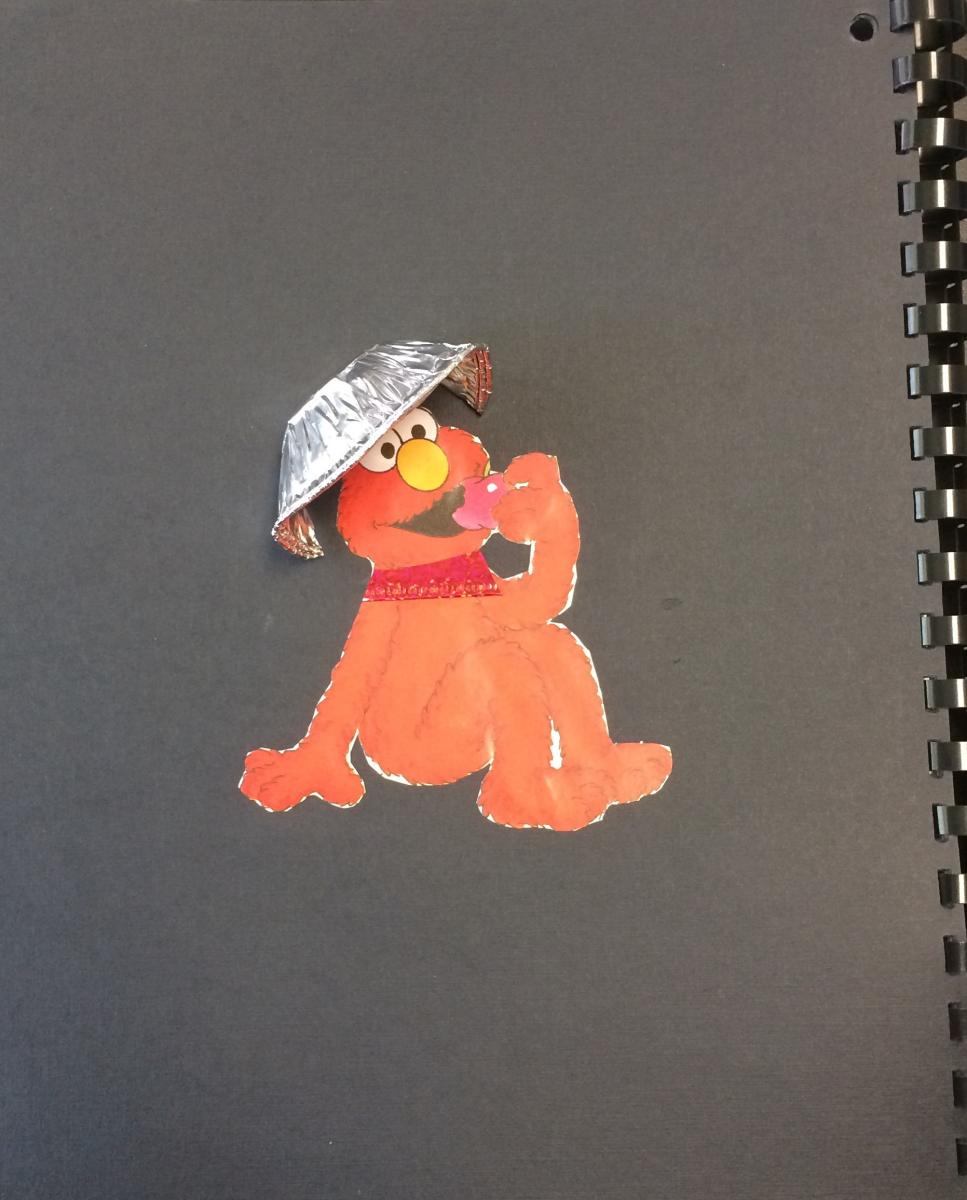
- Dr. Roman recently pointed out that, “The salient features of a target should include 2 or 3 descriptors, but not more”, and, “The salient features of a target should be true, or nearly always true, of the target”.
See also:
- Guidelines for Modifying Books for Students in Phases I, II, and III
- Adapting Books and Literacy for Students with CVI
- General Materials Used to Adapt Books for Children with CVI
Examples of Books
The following are examples of books I have created for students with CVI:
- Where is the Red Gift Bag?
- Getting Ready for School (CVI-friendly pegboard book)
- One Yellow Slinky Bouncing Up and Down
- Three Silver Pie Tins and One Red Puff
- Three Bright Red Pom Poms Lined Up in a Row
- Five Little Lights
- My Favorite Things
- Clifford's Family (Modified Version)
For more ideas from Diane Sheline, visit Strategy to See.
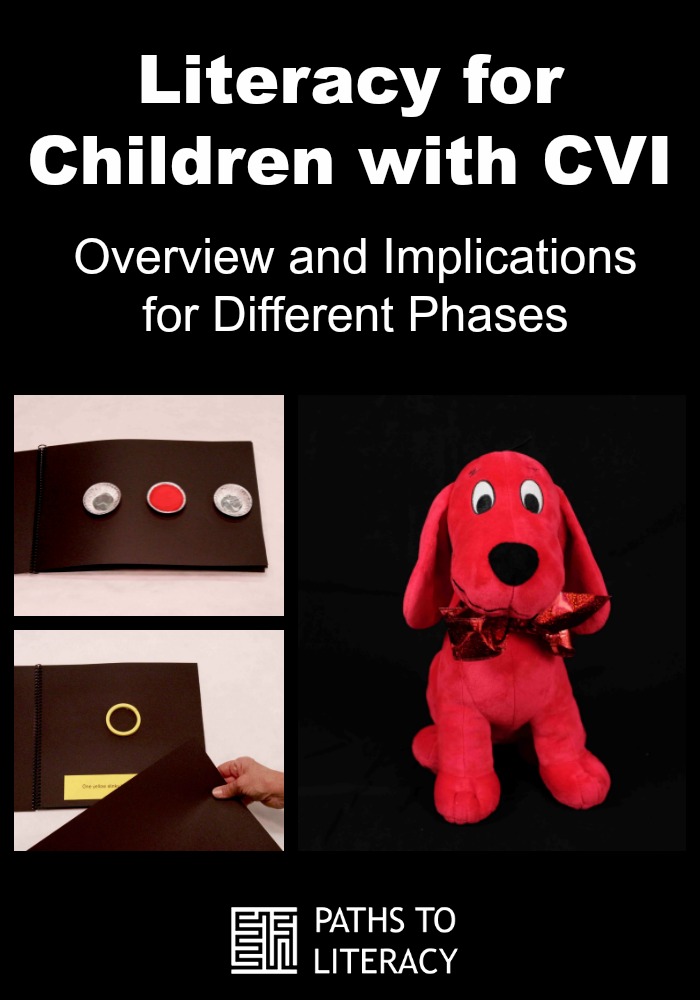

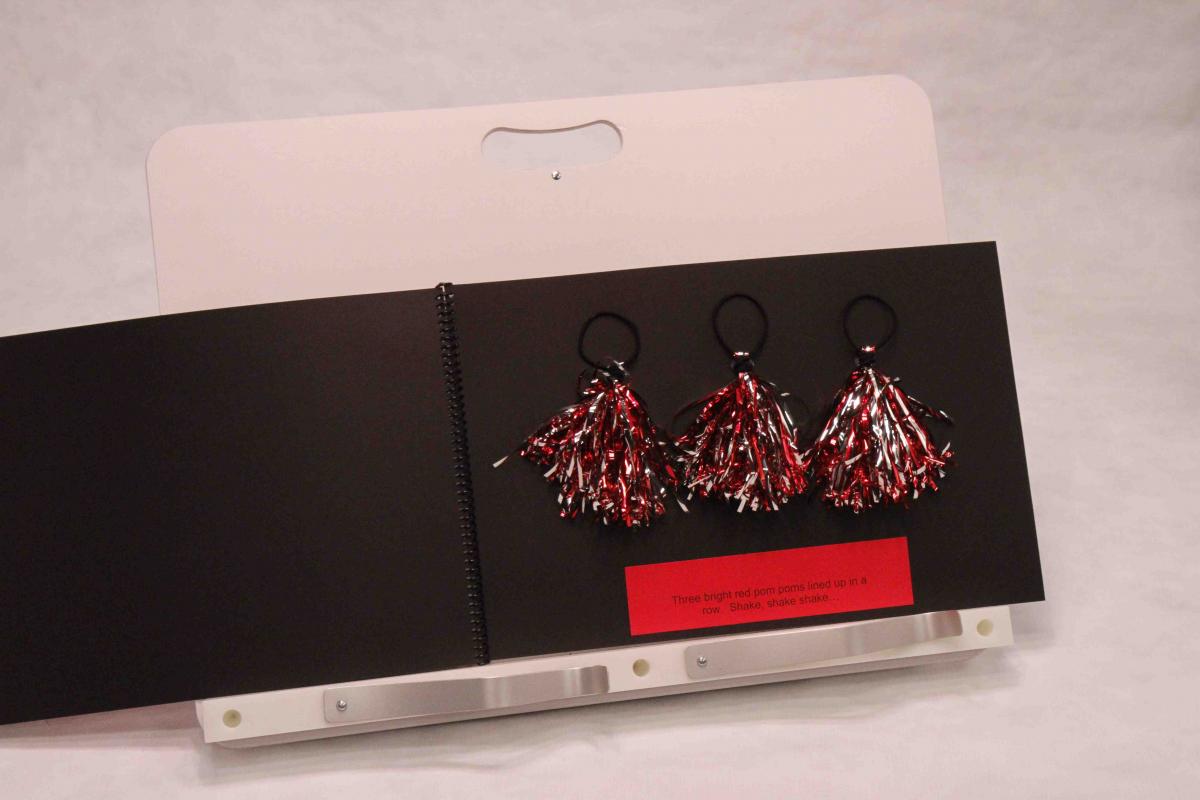
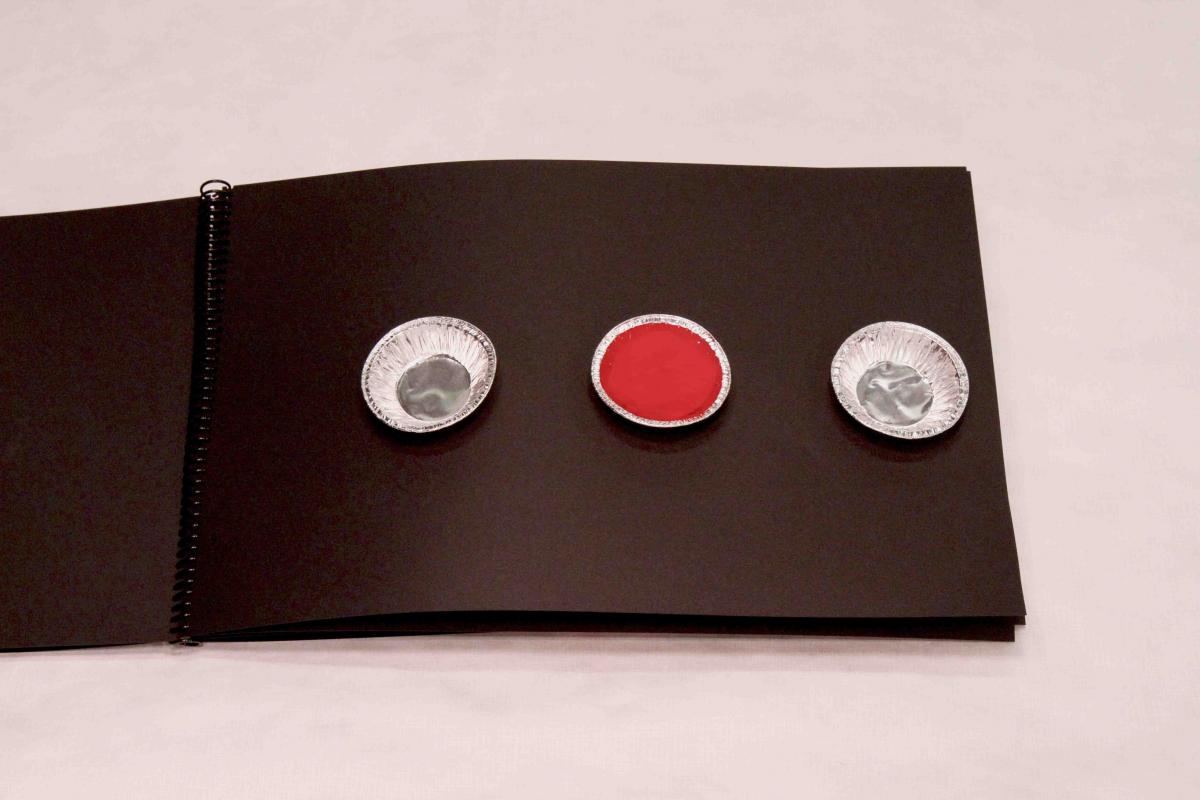
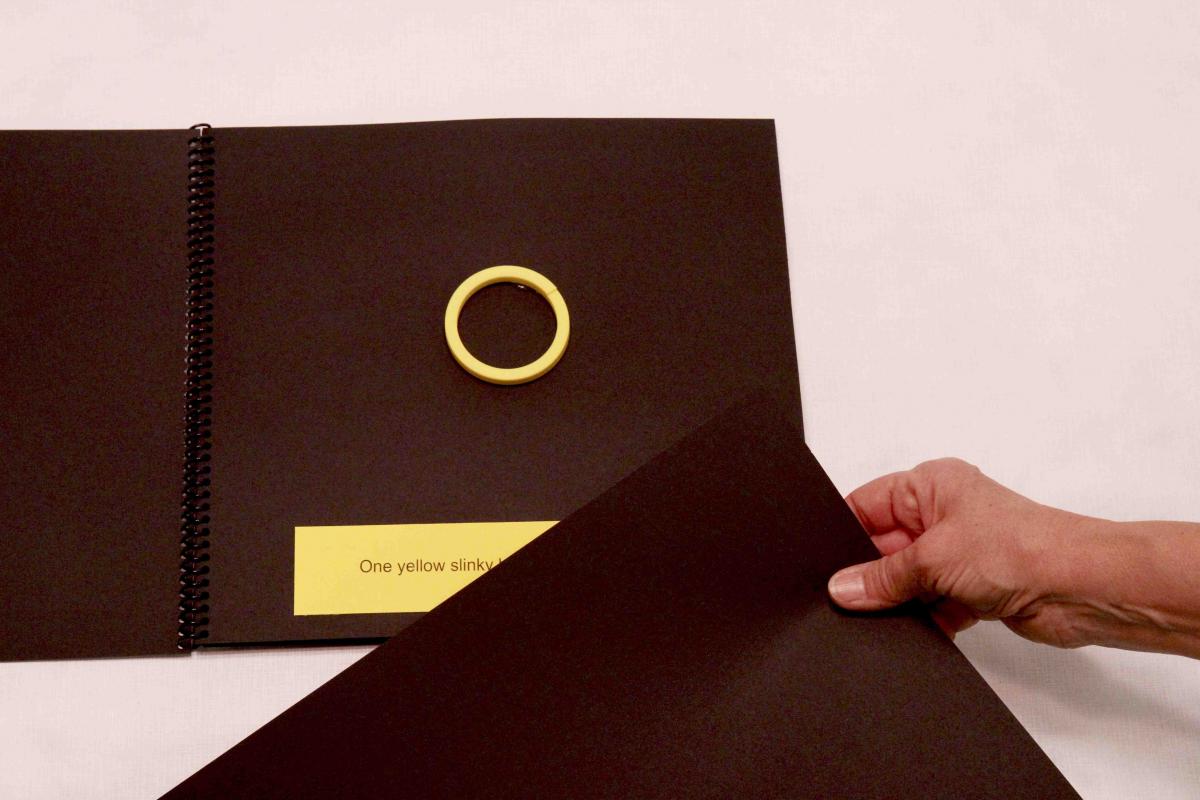
Comments
CVI
Helping your son with CVI